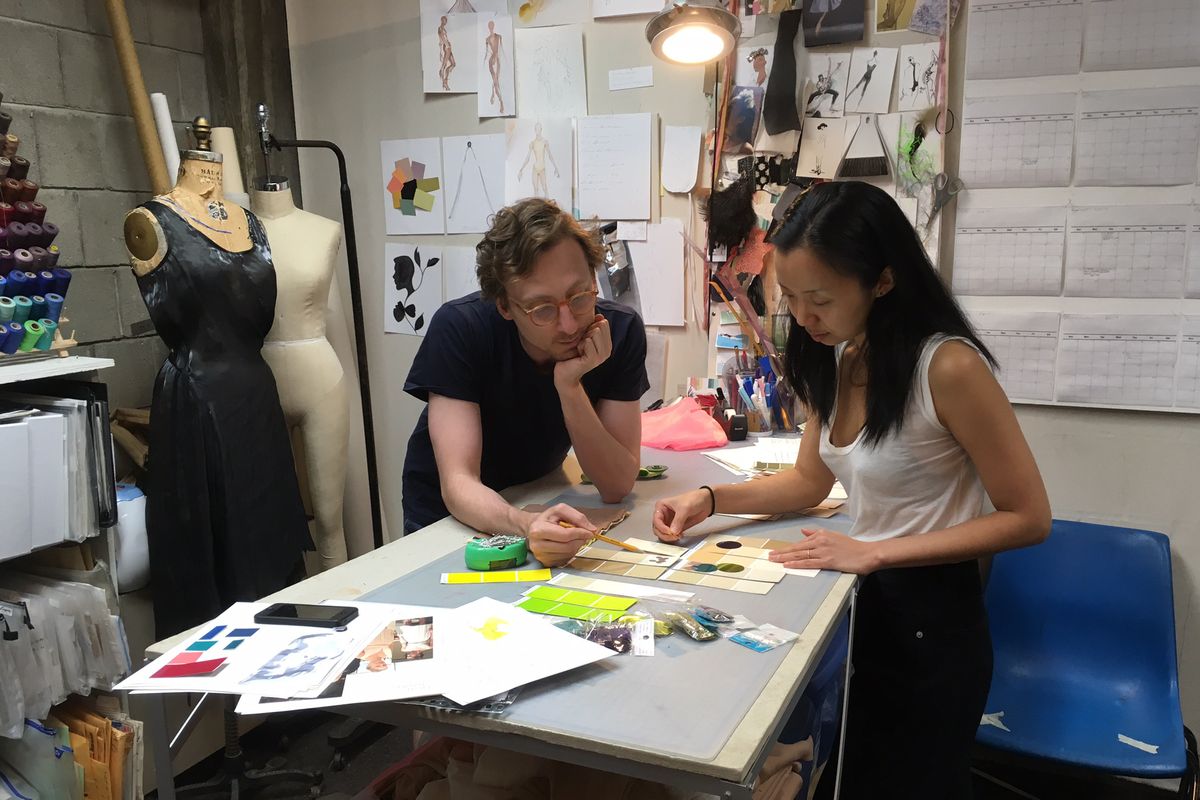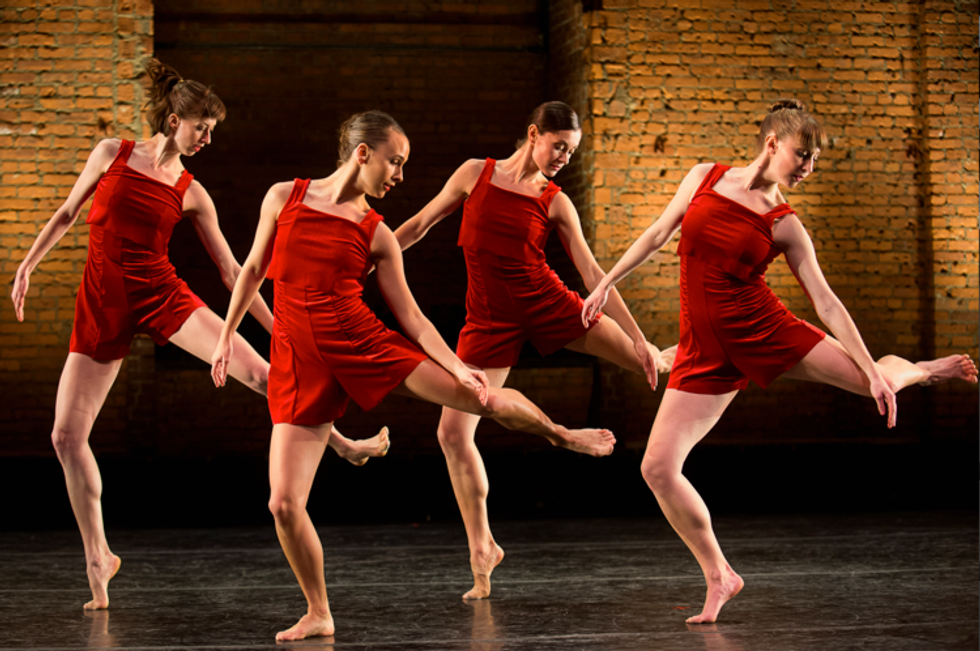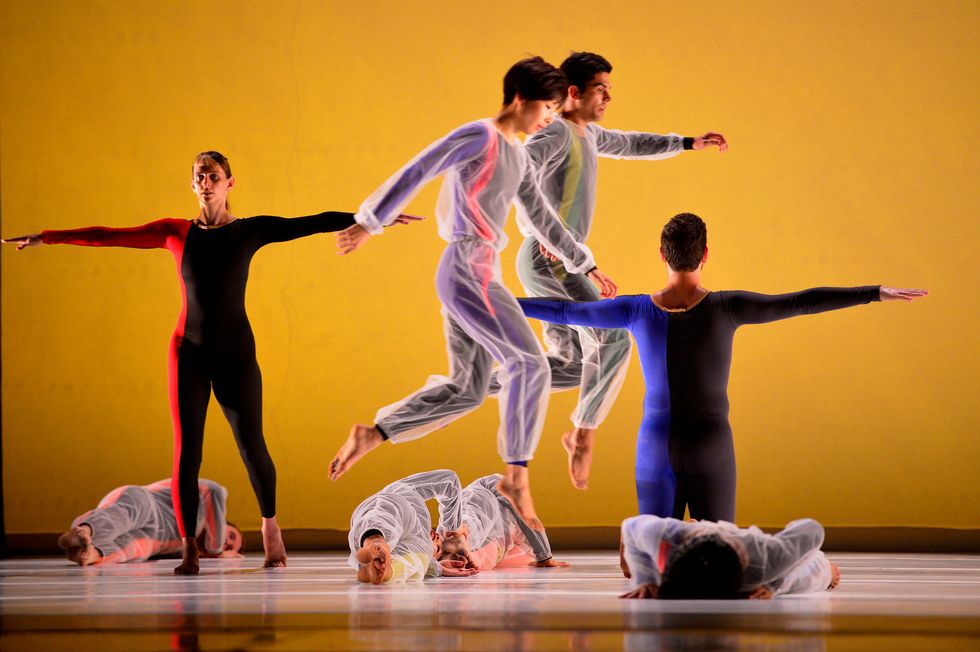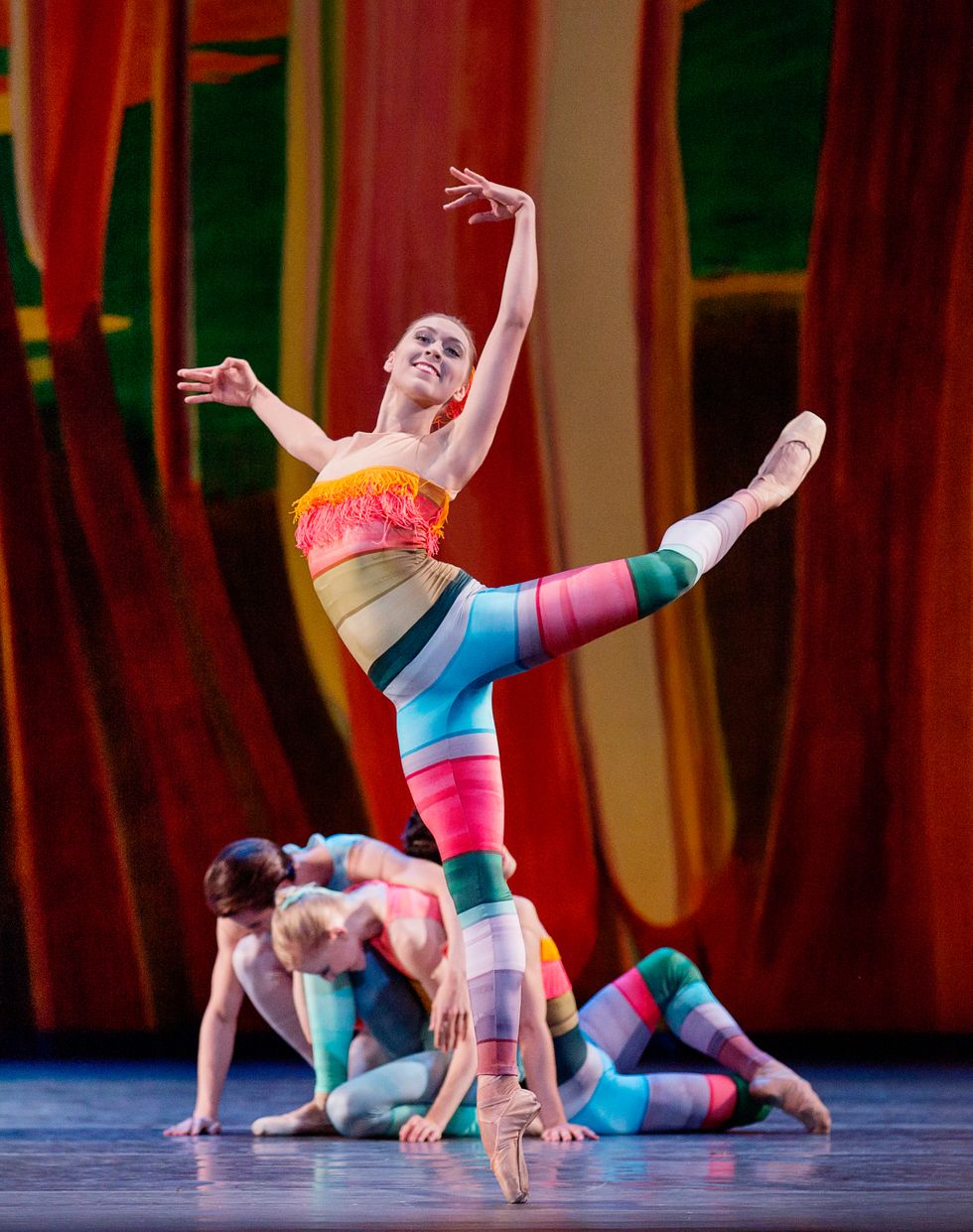
Reid and Harriet, Harriet and Reid. Even the pairing of their names sounds destined to be a fabulous clothing line. Since founding their eponymous costume design company in 2011, Reid Bartelme and Harriet Jung have snipped, sewed, hemmed and—when necessary—out-and-out hacked their way to the crest of dance costume design. They’ve designed for everyone from Justin Peck, New York City Ballet’s choreographer in residence, to Jack Ferver, an experimental-performance artist, managing to do with their designs what few others have achieved—bridge the diametrically opposed dance worlds of classical ballet and downtown dance.
At first glance, their story appears to be a tale of opposites who attract. He’s a former dancer who performed in the companies of Lar Lubovitch and Shen Wei; she briefly studied Korean folk dance as a child but went on to earn a degree in molecular and cell biology. Within their design company, she calls him the Master Pattern Maker; he calls her the CFO. But ever since they gravitated toward each other as students at the Fashion Institute of Technology, both eager to throw themselves into their second careers, they’ve operated on the same wavelength. Even as classmates, Bartelme says, “there was synergy in terms of our pace and aesthetic.” As costume designers, their approach is strikingly similar to the choreographers who hire them: They know how to make the dancers look good, keep the integrity of a piece at the forefront of their creations and—maybe most importantly—not be afraid to cut really good material.
“There’s such a thing as overdesigning.”
The hallmarks of their brand, Bartelme and Jung agree, are inventiveness, an eye for beauty and simplicity. “There’s such a thing as overdesigning,” says Jung, “which we’re really careful about not doing. We think there have to be reasons or a purpose for garments and costume design—we make sure it makes sense within the context of a piece.”

Pam Tanowitz’s Heaven on One’s Head. Photo by Christopher Duggan, courtesy of Pam Tanowitz Dance.
After receiving an initial e-mail from an interested client, with as many details about the project as possible—the scope, music, set, dancers—Bartelme and Jung decide if they’d like to take it on. “It needs to be something that is going to interest us or feed us,” says Bartelme. “When we say yes—when we ‘Say Yes to the Dress’—we’ll go into the design process.” Sometimes, he explains, the choreographer will have footage of the dance; other times, particularly if it’s a larger company with a production schedule planned far in advance, there won’t yet be any dance to source from.
At their studio within the Abrons Arts Center in downtown New York City, they’ll sit down at a desk and doodle side by side, showing each other their ideas until, as Bartelme says, “we start to arrive at some conclusions.” They’ll produce sketches and send those off to the choreographer. “If they have notes, we’ll change things,” he says. “From there, it’s a matter of figuring out how these things are going to get made.” Though he admits that the studio can get chaotic when they’re deep in the throes of a design, its layout—with a washer and dryer, a sink, an area for dyeing fabric, a cutting table, shelves and dress forms—is a vast improvement over Bartelme’s living room, where many of the pair’s first designs were produced.

Doug Varone’s ReComposed. Photo by Grant Halverson, courtesy of American Dance Festival.
“Send me whatever you’ve got.”
Not every gig has the luxury of time. “We’ve definitely done jobs in a week,” says Jung. Though that’s an unusual situation, they’re more willing to quickly throw something together for a choreographer they’ve worked with before. This past summer, they mailed choreographer Pam Tanowitz, a longtime and favorite client, costumes for a performance at Vail International Dance Festival in Colorado after a whirlwind week of design and creation. “They give her a group of dancers, and she basically makes the piece when she gets there,” explains Jung. Not wanting to tax the designers unnecessarily, Tanowitz asked that they send her their scraps or discarded costumes—what she calls their “garbage.” “She’s always asking us for garbage!” says Jung, laughing. “We don’t have garbage—once we make costumes, they’re gone. And we don’t want to send Pam garbage.” Luckily, they’d just started production on a project that had fallen through. “We’d bought fabric and had just begun making things,” says Jung. Those would-be costumes—now slated for the trash bin—were slightly reworked and shipped to Tanowitz. “This time,” Jung says wryly, “she’s literally getting our garbage.”

The costumes for Justin Peck’s Scherzo Fantastique became the inspiration for Reid & Harriet’s swimsuit deisgn (see below). Photo by Paul Kolnik, courtesy of New York City Ballet.
Though this particular situation had a happy and neat ending, that’s not always the case. Occasionally, their designs aren’t a perfect fit. For another upcoming collaboration with Tanowitz, who is choreographing Bach’s entire Goldberg Variations suite, Bartelme and Jung came up with a whimsical costume concept: jumpsuits made of colored ribbons. “We had a sample produced and figured out the logistics of how it would work,” he says. “But when we brought up the samples to their residency in Montclair, it became very clear to us that these costumes were not right. The piece and the stage space where it will exist have a sense of austerity, and while the dance is at times charming and funny, the costumes needed to become slightly less conspicuous.” The silver lining of having to rethink their design? Having enough time. “When you end up in a situation where the turnaround is too quick, that can be really painful,” says Bartelme. “We have enough time to regroup, redesign and make something that feels more appropriate.”
“For us, it’s become a fine-art expression.”
With such a solid foothold in the dance-costume design world, Jung and Bartelme have begun to branch out—in both surprising and natural ways. In September, they began a three-month residency at New York University’s Center for Ballet and the Arts, and in March, they’ll have an evening at the Guggenheim Museum showcasing works they’ve costumed.

Jung in the duo’s Bella swimsuit design. Photo by Michael Manta, courtesy of R&H.
The pair has also recently dipped a toe into the retail world. After receiving great feedback on costumes they created in the summer of 2016 for Justin Peck’s Scherzo Fantastique—unitards with thick stripes of vivid colors like pink, forest green, blue and tan—they launched two one-piece bathing suits in the same pattern, now for sale on their website (reidandharriet.com). “We thought it was logical to go from leotards to swimwear,” says Jung.
Costume designs and trends aside, one truth about dressing dancers still stands: “Dancers with amazing bodies still do not enjoy wearing unitards,” says Jung. Unfortunately, “we kind of love unitards,” says Bartelme. “It’s a great thing because it creates a surface of the body that you can then paint on, basically.” That phrasing crops up often when he and Jung speak about their designs—for them, it’s truly an artform. “It’s become a fine-art expression,” he says. “It’s a more painterly expression of dressing the body. That’s made it a lot more fun.”




